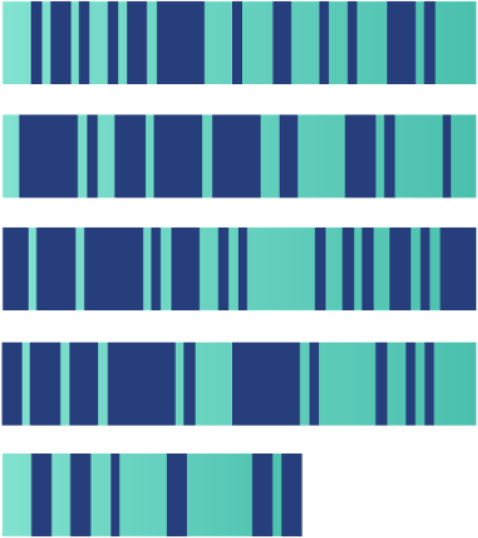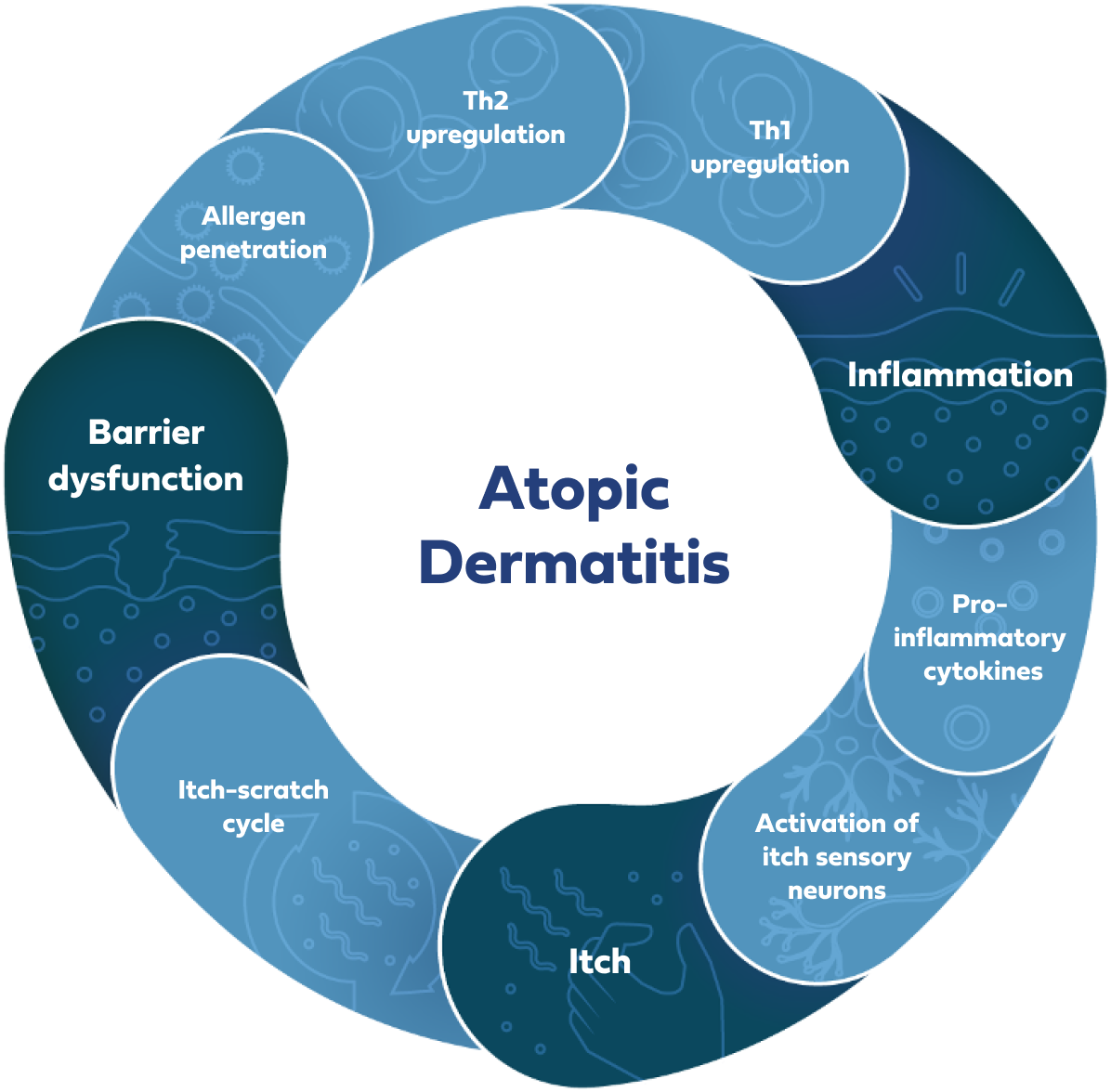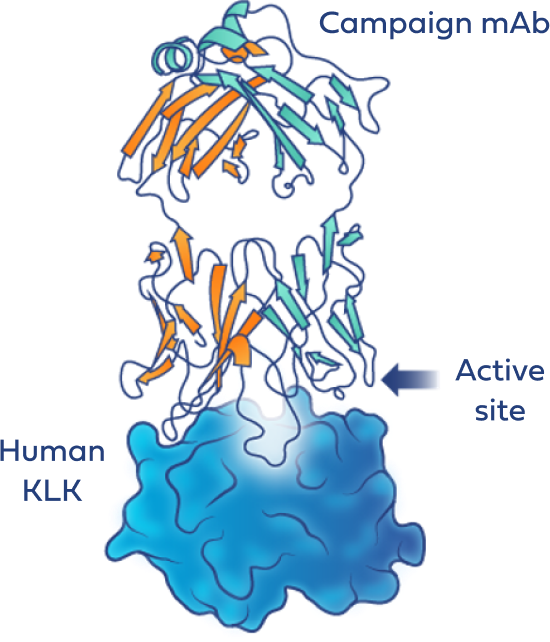KLK5/7 share ~40% identity with most homology occurring in the active site

At Triveni, we are working at the convergence of human genetics, best-in-class antibody design, and precision medicine. We believe that a deep understanding of human genetics and pathway biology derisks drug discovery and opens up new opportunities to more effectively treat disease. We are using these insights to address I&I disorders, starting with atopic dermatitis (AD).
Armed with genomic data and biological insights, we are able to select the right targets and design therapeutic antibodies that do more than bind – they impact protein function. Our exhaustive process to validate antibody function involves several rounds of screening at both the discovery and optimization stages.
Triveni’s data platform leverages a variety of global public and private datasets to define sub-populations based on genetic mutations, phenotypic variability, treatment response, and other variables.
We derive insights from demonstrations of human biology with patient populations who exhibit either enhanced or diminished function of specific genes to inform and validate our targets of interest.
A number of human diseases are caused by the body’s overactive response to ongoing inflammation. In the case of Triveni’s lead indication – atopic dermatitis – chronic inflammation results in dry, itchy, inflamed skin lesions. Despite recent advancements for more moderate-to-severe patients, as many as two-thirds of patients do not have an adequate response to approved Th2-targeting medicines. In particular, these medicines fail to control barrier symptoms and itch, the number one patient reported symptom.
Triveni is focused on skin barrier dysfunction as a primary factor of AD pathogenesis. This “leaky barrier” leads to the initial and ongoing passage of allergens into the body, triggering the inflammation. Resolving this aberrant inflammation addresses this underlying driver of disease.

Through our data platform, Triveni has shown that kallikreins 5 and 7 (KLK5/7) are critical for shoring up and maintaining epidermal barriers – particularly the skin. It is known that an imbalance in the expression of KLK5/7 causes barrier dysfunction, inflammation, and itch. Studies have shown that 70-90% of AD patients show increased activity or expression of KLK5/7. Importantly, this overexpression is also found in both lesional and nonlesional skin, highlighting the importance of a systemic therapy to address the overexpression.
More broadly, this mechanism is implicated in several I&I indications tracking with the expression of KLK5/7 and compromised barrier. Triveni has already achieved proof of concept in a number of AD animal models and beyond, demonstrating the importance of this mechanism.
Additionally, we are prosecuting rationale combinations of KLK5/7 with therapeutic mechanisms, starting with a bispecific antibody that combines TRIV-509 with IL-13 inhibition.
Triveni’s lead program, TRIV-509, is a half-life extended monoclonal antibody that contains an active site inhibitor of both KLK5/7. Through this mechanism in animal models, TRIV-509 has demonstrated the ability to directly impact each key pillar of disease – barrier dysfunction, inflammation, and itch – better than current standard of care.

